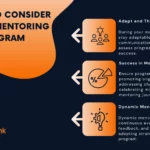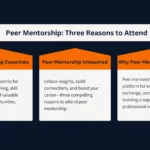
Learning does not have to be a solo mission. Entering a group learning can be very effective in grasping new techniques. Whether you are working in a small startup or a multinational corporation, group learning can transform how employees acquire skills, solve problems, and innovate. It is not just about efficiency but it is also about building a workplace culture where continuous learning and teamwork go hand in hand.
What is Group Learning?
Group learning is a collaborative educational approach where individuals acquire knowledge, enhance skills, or solve problems collectively rather than in isolation. Grounded in the belief that meaningful learning often emerges through peer interaction, this method emphasizes the exchange of ideas, critical dialogue, and exposure to diverse viewpoints.
Unlike conventional top-down instruction, group learning is participatory and dynamic. It encourages active engagement, shared understanding, and joint progress.
In professional environments, this often takes the form of structured workshops, project-based collaborations, discussion circles, or learning communities. These initiatives may target specific competencies such as leadership development, technical training, or product expertise or address real-time organizational challenges.
The essence of group learning lies in its ability to foster deeper engagement. Learners move from passive information consumption to active participation in a collective learning journey. The group’s shared momentum, mutual support, and constructive challenge encourage deeper reflection, dialogue, and faster growth.
Mentoring types can give you valuable ideas about how to implement group learning in different styles. Or blog content “Your One-Stop Guide to Every Mentoring Model” gives you valuable information about mentoring types.
What are the Benefits of Group Learning in the Workplace?
First of all, it builds team synergy. When employees learn together, they start understanding how their coworkers think and approach problems. This does not just help with knowledge sharing. It smooths out collaboration across departments and encourages more open communication.
Secondly, group learning improves employee engagement. Solo online training modules can feel like watching paint dry. But when you introduce a shared learning experience say, a brainstorming session or a discussion-based workshop. Employees become more interested, and that engagement leads to better learning outcomes.
Another big win is knowledge retention. This learning style naturally incorporates these techniques without the learners even realizing they are doing it.
Group learning also fosters a growth mindset. In a group setting, people see that others are also learning, struggling, and evolving. It removes the stigma around not knowing something and encourages employees to stay curious.
Not to mention, well-organized sessions also promote problem-solving skills. When a group is working through a scenario or case study together, individuals are exposed to multiple angles of attack. This collective intelligence leads to more robust solutions and helps employees think critically in their solo roles too.
Especially in remote or hybrid workplaces, group learning can be an excellent way for team members to form stronger bonds. It helps break silos, builds trust, and cultivates a more cohesive organizational culture.
How to Create Group Learning Sessions
Setting up effective learning sessions in a workplace needs phases. In other words, setting up group learning sessions is not just about slapping people into a Zoom call and hoping for the best.
Defining of Objectives for Group Learning Session
What is the point of the group learning session? Are you trying to train a team on a new tool? Brainstorm solutions to a recurring issue? Build leadership skills? Being laser-focused about your learning goal will keep the session productive and prevent it from turning into a group therapy circle.
Next, choose the right format in group learning sessions. Not all group learning has to look the same. It could be:
- A roundtable discussion
- A case study deep dive
- Peer-to-peer mentoring or teaching (one person presents, others ask questions)
- A simulation or role-play
- Breakout group problem-solving followed by sharing insights
Assigning Roles in Group Learning
This learning style consists of roles and responsibilities. Regardless of the format of group learning, it is important for each participant to have a defined role in every session.
For example, one person might be responsible for taking notes, another for facilitating the discussion, and another for asking questions or delivering a presentation. Giving everyone a purpose increases engagement and keeps the energy up.
Preparation of Pre-Learning Materials
Before the group learning session, it is a good choice to send pre-learning materials to the participants to prepare them. This could be a short article, an informative video or a question to think about. The purpose of pre-learning materials is to ensure that participants have the basic knowledge in advance so that everyone starts at the same level of knowledge.
This preparation means that time is not wasted explaining basic concepts during the session but can instead be used for more in-depth discussions, practical work or strategic planning. It also contributes to participants being more prepared and motivated to participate in the process. This approach is particularly effective in training, workshops or team strategy meetings.
Promoting of Discussion
Encourage open discussion during the session but maintain structure. Creating an environment where participants feel free to share their thoughts boosts creativity and engagement. However, this openness should not lead to a loss of focus. That’s why it is essential to guide the discussion and keep the process on track.
To use time efficiently, allow conversations to flow naturally while staying focused on the session’s goals. Guiding questions, small group activities, structured discussion frameworks, or interactive exercises are effective tools to keep the session both dynamic and purposeful. Regularly revisiting the objectives set at the beginning and, when necessary, steering the conversation back to the main topic ensures everyone contributes and the session remains productive.
What Are the Differences Between Group Learning and Mentoring Circles?
Group learning and mentoring circles can seem similar in form but different in function and emphasis. Both involve people coming together in a structured way to learn from and with each other. Both support peer interaction and mutual growth. But the mindset and outcomes tend to diverge.
It is usually more about being topic-driven. The focus is on exploring a particular subject, building new skills, or tackling a shared challenge. Participants may be peers, or they may come from different levels, but there’s often less focus on experience hierarchy. Everyone is there to engage with the topic and with each other as equals. The structure tends to be more horizontal.
Mentoring circles, by contrast, lean toward guidance and career development. They are often organized around one or more mentors and more experienced individuals who support a group of mentees. The goal is less about exploring a shared topic and more about offering perspective, advice, and coaching. It’s more vertical in structure, though still interactive. Mentees gain from both the mentors and each other, but the mentor role often anchors the conversation.
Another difference lies in tone and depth. Group learning can feel more academic or task-focused. It’s about understanding, testing, and applying ideas. Mentoring circles, meanwhile, tend to get more personal. They create space for career reflection, identity questions, and emotional support.
The commitment also tends to differ. Learning in group may be a short-term engagement a couple of sessions and done. Mentoring circles often last longer and develop trust over time, especially when the topics get into personal growth, challenges, and ambition.
The content is another difference. Mentoring circles emphasize context. One teaches you what to think about. The other helps you think about yourself. Both are valuable. They can even coexist. For example, an organization might use group learning to upskill teams on technical tools while also running mentoring circles to support leadership development.


